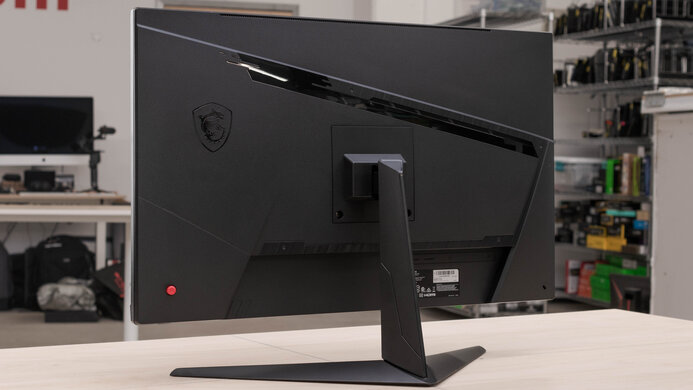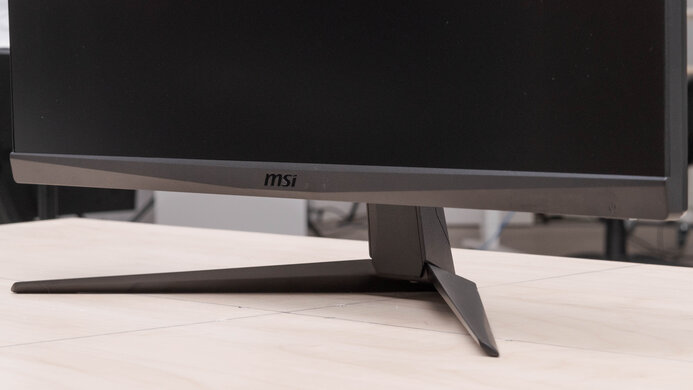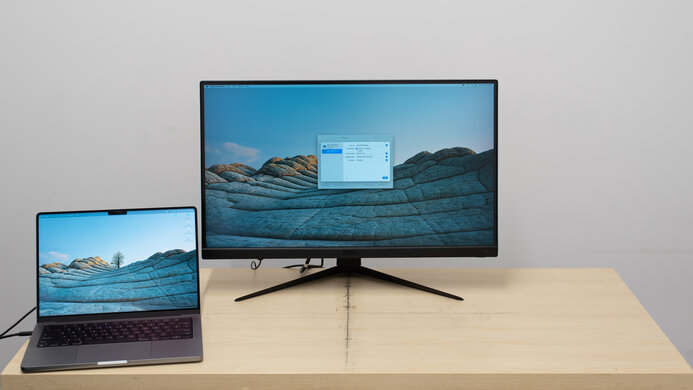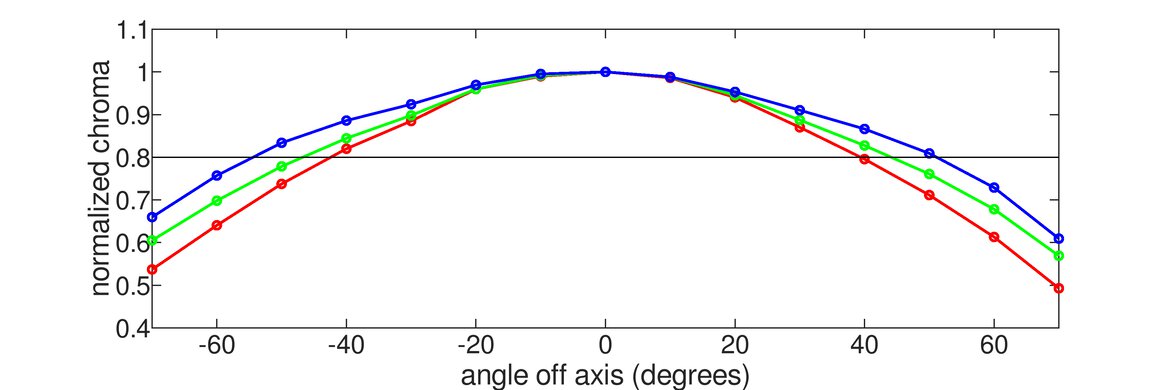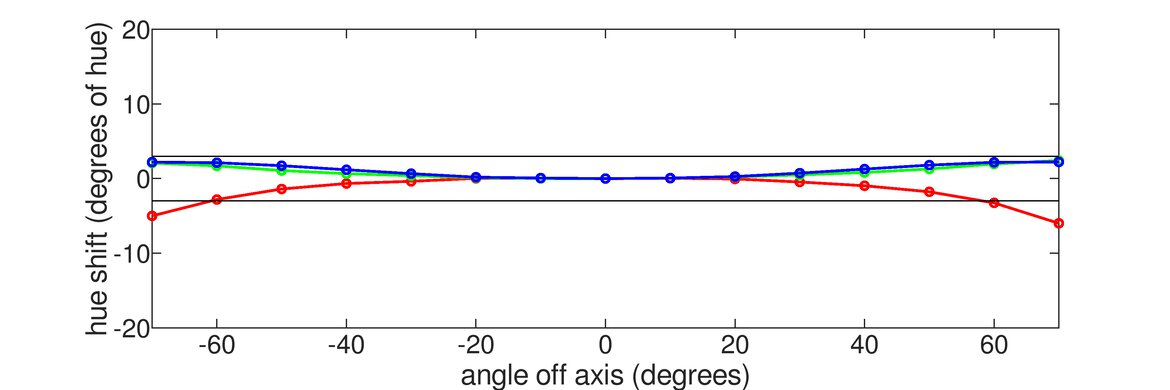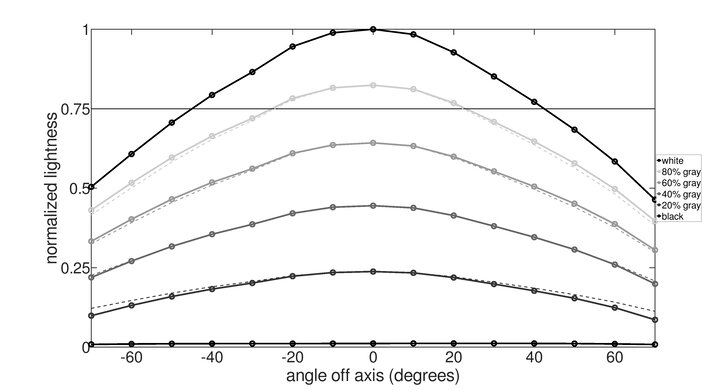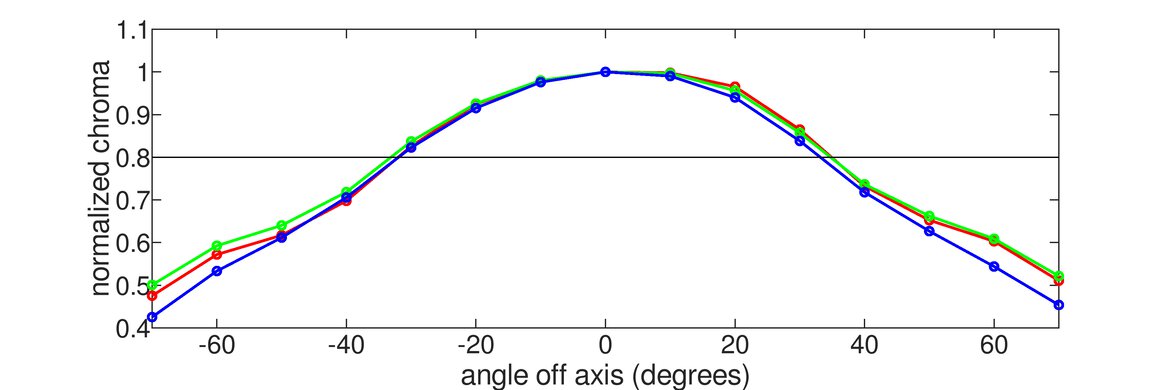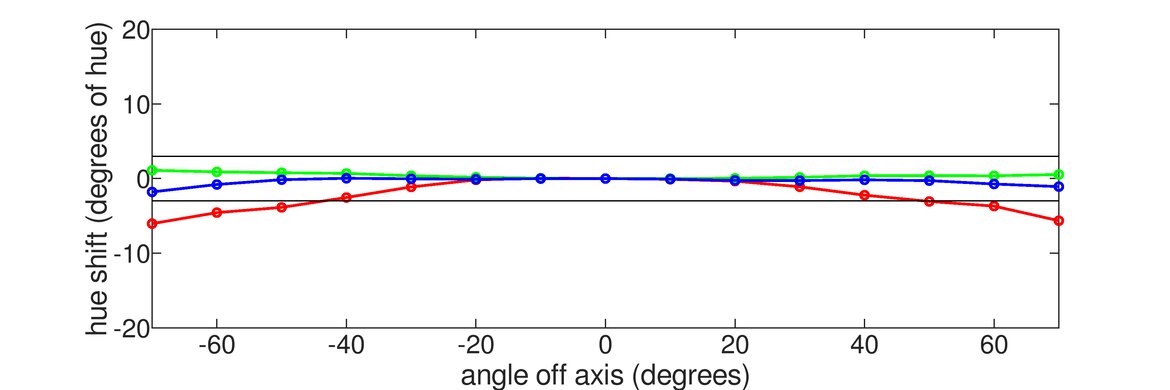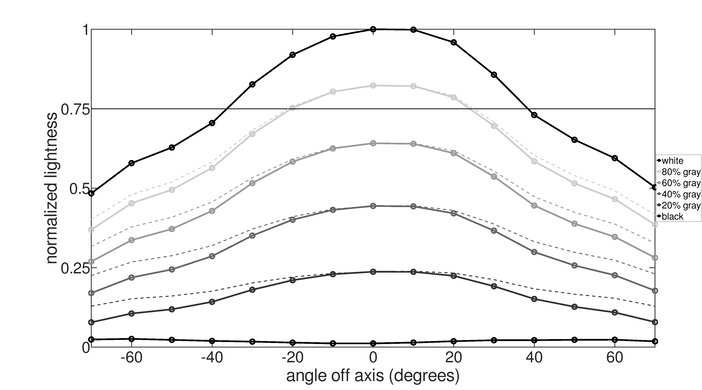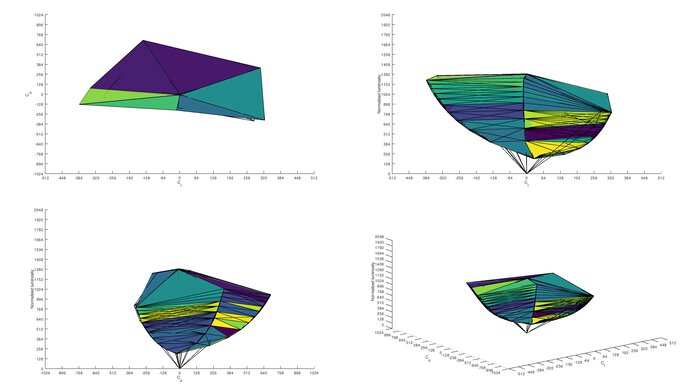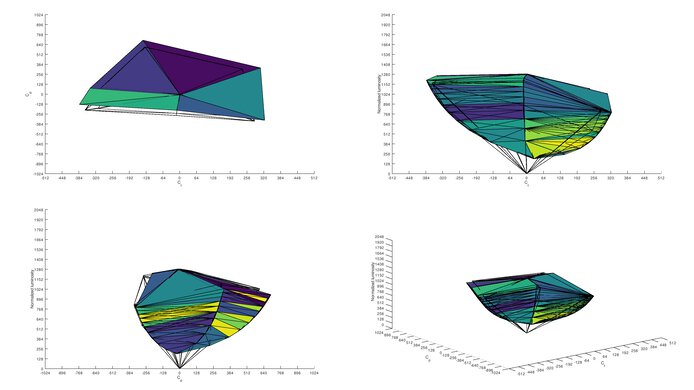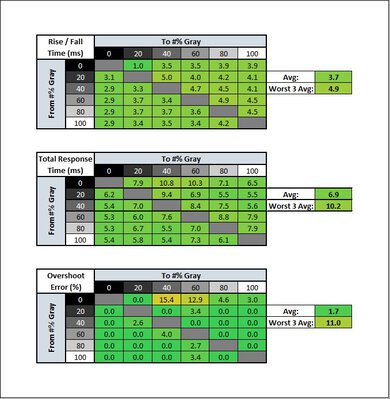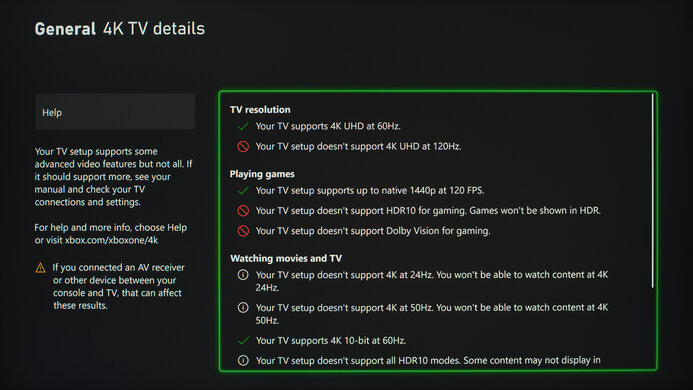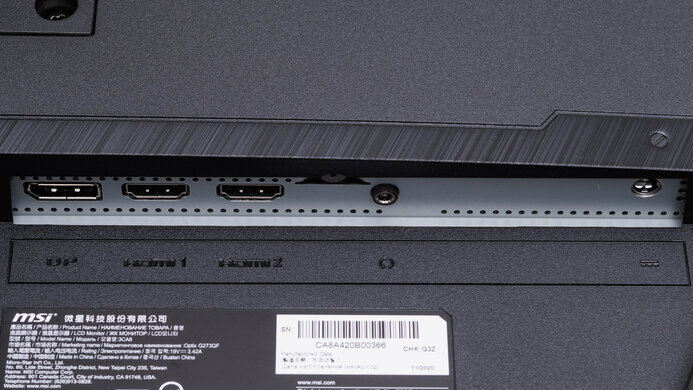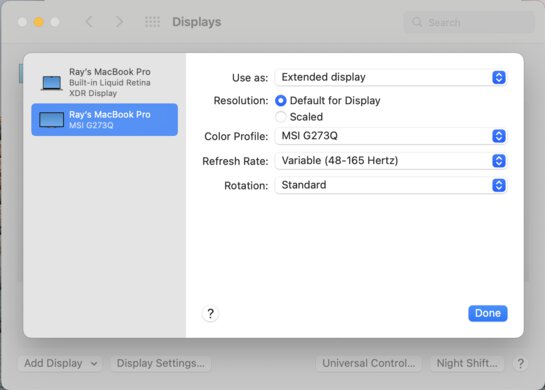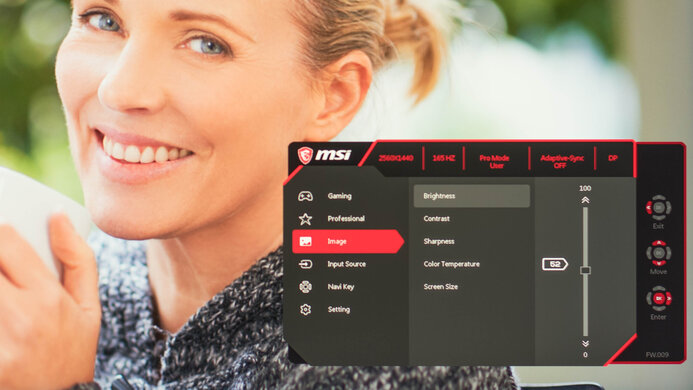The MSI Optix G273QF is a great gaming monitor. It has features most gamers would look for in a monitor, like FreeSync support, G-SYNC compatibility, and a 165Hz refresh rate. Its incredible response time results in smooth motion, and gaming feels responsive due to its very low input lag. It's also a good choice for co-op gaming thanks to the IPS panel's wide viewing angles, but that comes at the cost of a lower low contrast ratio, making black appear gray. It has good peak brightness and decent reflection handling, so visibility shouldn't be an issue in most well-lit rooms. However, its stand doesn't offer much in terms of ergonomics, so it may be difficult to place in an ideal viewing position. It also has limited extra features, lacking HDR support and USB inputs.
Our Verdict
The MSI Optix G273QF is good for most uses. It's a great gaming monitor thanks to its 165Hz refresh rate, FreeSync support, and G-SYNC compatibility. It also has extremely low input lag and very quick response time. It's good for office use and decent for content creators because it has a large 27 inch screen and 1440p resolution. However, the stand has terrible ergonomics, so it may be hard to place in an ideal viewing position. Unfortunately, it doesn't support HDR and doesn't have many extra features.
- Wide viewing angles.
- FreeSync support and G-SYNC compatibility.
- Incredible response time.
- Low contrast ratio.
- Limited on features, like lack of HDR support.
The MSI Optix G273QF is good for office use. It has a large 27 inch screen, and its 1440p resolution helps deliver clear text. It has wide viewing angles, so the image remains accurate if you're viewing from the side. It gets bright enough to combat glare and also has decent reflection handling. Sadly, it has terrible ergonomics, so it may be difficult to place it in an ideal position.
- Wide viewing angles.
- Decent reflection handling.
- Gets bright enough to combat glare.
- Terrible ergonomics.
- No USB inputs.
The MSI Optix G273QF is great for gaming. It has a high 165Hz refresh rate with FreeSync support and G-SYNC compatibility. The response time is outstanding, resulting in minimal motion blur, and it has extremely low input lag as well. Unfortunately, it's not an ideal choice for dark room gaming as its low contrast ratio results in blacks that look gray.
- FreeSync support and G-SYNC compatibility.
- Incredible response time.
- Extremely low input lag.
- Low contrast ratio.
The MSI Optix G273QF is decent for multimedia use. Its 27 inch, 1440p screen helps deliver crisp images. It has wide viewing angles, so you can easily watch your favorite content with a friend. However, it has terrible ergonomics, making it difficult to place in an ideal viewing position. It also has a low contrast ratio, so blacks look gray when viewed in the dark.
- Wide viewing angles.
- High 1440p resolution and 27 inch screen.
- Terrible ergonomics.
- Low contrast ratio.
The MSI Optix G273QF is decent for content creators. The large screen and high resolution let you see more of your video's timeline without scrolling too much when editing. It also has wide viewing angles if you need to share your screen with a coworker or client. However, it may be difficult to place it in an ideal viewing position because it has terrible ergonomics.
- Wide viewing angles.
- High 1440p resolution and 27 inch screen.
- Terrible ergonomics.
- Low contrast ratio.
Changelog
- Updated Apr 18, 2023: Confirmed that 1440p works on this monitor with the PS5.
- Updated Jun 13, 2022: Updated to Test Bench 1.2, resulting in changes to the results and scores with the Response Time and Input Lag. Added tests for Console Compatibility and macOS compatibility and made minor changes to other tests, which you can see in our Changelog.
- Updated Apr 19, 2021: We set the height adjustment to N/A by mistake. It has been fixed.
- Updated Feb 17, 2021: Review published.
Check Price
Differences Between Sizes And Variants
We tested the 27 inch MSI Optix G273QF, which is the only size available. There's an MSI Optix G27CQ4P model that appears to be similar, with a 165Hz refresh rate and 1440p resolution, but it has a VA panel instead. This means we expect it to have higher contrast and worse viewing angles than the G273QF. There's also a variant with much better ergonomics, the MSI Optix G273QPF. It appears to be the same monitor, but it has height, tilt, and swivel adjustments, and it can be rotated to portrait orientation in either direction.
If someone comes across a different type of panel or their MSI Optix G273QF doesn't correspond to our review, let us know in the discussions and we'll update the review. Note that some tests, like gray uniformity, may vary between individual units.
Our unit was manufactured in November 2020, and you can see the label here.
Popular Monitor Comparisons
The MSI Optix G273QF is a great gaming monitor that has a better response time than other 165Hz options. However, it doesn't support HDR10 and it has fewer extra features than similarly-priced monitors, like the Gigabyte M27Q (rev. 1.0). Also see our recommendations for the best 1440p monitors, the best gaming monitors, and the best budget monitors.
The MSI Optix MAG274QRF-QD is better for most uses than the MSI Optix G273QF, but they have similar gaming performance. They both have an incredible response time, very low input lag, and a 165Hz refresh rate for gaming. The MAG274QRF-QD has much better ergonomics, allowing you to easily adjust the screen. It also supports HDR10, which the G273QF doesn't, and it has many more features, such as a Console Mode that's designed for PS5 compatibility.
The Gigabyte G27Q and the MSI Optix G273QF are both entry-level 1440p gaming monitors with a few similarities and some differences. The MSI has a slightly higher refresh rate, and it has a bit better motion handling as well. On the other hand, the Gigabyte is a bit more versatile for all-around use as it has extra features, like a USB hub, and it has better ergonomics. The Gigabyte also gets brighter and has better reflection handling, making it a better choice for well-lit rooms. Lastly, the Gigabyte supports HDR, which the MSI doesn't, but it doesn't add much due to its limited HDR performance.
The LG 27GN850-B/27GN880-B and the MSI Optix G273QF are two great gaming monitors. They offer similar overall performance with an incredible response time and low input lag. The MSI has a higher 165Hz max refresh rate that delivers a slightly smoother gaming experience. However, the LG supports HDR10, which the MSI doesn't, and it displays a wide color gamut, so it's a decent choice for HDR gaming.
The Dell S2721DGF and the MSI Optix G273QF are two 1440p, 165Hz monitors with IPS panels, and the Dell is better for most uses. The Dell has much better ergonomics, allowing you to place the screen how you like, and it's better for well-lit rooms as it gets brighter and has much better reflection handling. The Dell also supports HDR, which the MSI doesn't, but it doesn't deliver a true HDR experience because it has low peak brightness and a terrible local dimming feature.

We buy and test more than 30 monitors each year, with units that we buy completely on our own, without any cherry-picked units or samples. We put a lot into each unbiased, straight-to-the-point review, and there's a whole process from purchasing to publishing, involving multiple teams and people. We do more than just use the monitor for a week; we use specialized and custom tools to measure various aspects with objective data-based results. We also consider multiple factors before making any recommendations, including the monitor's cost, its performance against the competition, and whether or not it's easy to find.
Test Results

The MSI Optix G273QF looks similar to other monitors from MSI, like the MSI Optix G27C5. It has a simple design with a wide V-shaped stand and thin bezels. It's mainly made out of matte plastic, and there's a bit of glossy plastic on the back. Although it's geared towards gamers, it shouldn't stick out in an office environment either.
The MSI Optix G273QF's build quality is decent. It's made mainly out of plastic, except for the metal feet. The plastic feels a bit cheap, and the back panel near the inputs is a bit loose. The bottom bezel also isn't uniformly flushed against the screen. On the plus side, the stand supports the monitor well, and there isn't much wobble.
Update 04/19/2021: We set the height adjustment to N/A by mistake. It has been fixed.
The ergonomics are terrible as it only has tilt adjustments. The MSI Optix G273QPF variant appears to be the same monitor, but it has height, tilt, and swivel adjustments, and it can be rotated to portrait orientation in either direction. The back panel is mainly matte with a strip of glossy plastic. Sadly, there's no cable management.
The V-shaped stand takes up a lot of space, but there's enough room in front to place your mouse and keyboard. The feet are metal, and the stand supports the monitor well.
This monitor doesn't have a local dimming feature. The above video is provided for reference only.
The MSI Optix G273QF has good peak brightness. It maintains its brightness extremely consistent across different content, and it gets bright enough to combat glare in most well-lit rooms. We tested peak brightness after calibration in the 'User' Picture Mode.
This monitor doesn't support HDR.
The horizontal viewing angle is excellent, which is expected from an IPS panel. The image remains accurate when viewed from the side, making it a good choice for co-op gaming. The colors start to lose accuracy quicker from the right than from the left, but it shouldn't be noticeable to most people.
The vertical viewing angle is decent. You still see an accurate image if you mount the monitor above eye-level.
The out-of-the-box accuracy is mediocre. Most colors are inaccurate and white balance is noticeably off. Color temperature is colder than the 6500K target, giving the image a blue tint. Gamma follows the target curve well for the most part, but some dark scenes are over-darkened while bright scenes are slightly over-brightened.
After calibration, the accuracy is incredible. Any remaining color and white balance inaccuracies can't be spotted by the human eye. The color temperature is also really close to the target. Gamma follows the target sRGB curve better, but some dark scenes are too bright.
This monitor doesn't support HDR.
This monitor doesn't support HDR.
The MSI Optix G273QF's reflection handling is decent, almost exactly like the MSI Optix MAG274QRF-QD. It handles a moderate amount of light well, but it's best to avoid placing it opposite a window or a direct light source.
The MSI Optix G273QF has a remarkable refresh rate. You can only achieve its max 165Hz refresh rate over DisplayPort because it's limited to 144Hz over HDMI. Although it's not officially listed on AMD's website, FreeSync works natively. It isn't officially listed as G-SYNC compatible on NVIDIA's website either, but it's marketed as G-SYNC compatible, and it's automatically enabled in the NVIDIA Control Panel. G-SYNC only works over a DisplayPort connection.
| Overdrive Setting | Response Time Chart | Response Time Tables | Motion Blur Photo |
| Normal | Chart | Table | Photo |
| Fast | Chart | Table | Photo |
| Fastest | Chart | Table | Photo |
The MSI Optix G273QF has incredible response time at its max refresh rate of 165Hz. Motion looks extremely smooth with almost no motion blur. The recommended overdrive setting is 'Fast' because it has quicker response time than 'Normal' and much less overshoot than 'Fastest'. However, it still has some overshoot in darker transitions. If that bothers you, 'Normal' has none, but has a slower response time.
| Overdrive Setting | Response Time Chart | Response Time Tables | Motion Blur Photo |
| Normal | Chart | Table | Photo |
| Fast | Chart | Table | Photo |
| Fastest | Chart | Table | Photo |
The response time at 60Hz is outstanding. Once again, fast-moving content has almost no motion blur. The recommended overdrive setting is 'Normal' because it has significantly less overshoot than 'Fast' and 'Fastest'. This means that you may have to change the setting if the frame rate of your game drops.
The input lag is incredibly low whether you're gaming at its max refresh rate or at 60Hz. It slightly increases with VRR enabled, but it shouldn't be noticeable at all.
The MSI Optix G273QF has a great 27 inch screen with a high 1440p resolution. If you want a 1440p monitor with a larger screen, check out the LG 32GN650-B/32GN63T-B.
This monitor is limited on inputs and doesn't have any USB slots, either.
There are only a handful of extra features on the MSI Optix G273QF, including:
- Crosshair: Adds a crosshair on the screen for FPS games.
- Frame Rate Counter: Displays the current frame rate.
- Blue Light Reduction: Removes blue light to help reduce eye strain.




